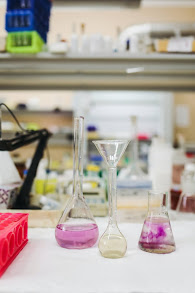Nucleic acids Chemistry(MCQs-Assigment questions)
Nucleic acids " biopolymers, or large biomolecules. Intial part for earth living organisums. Swiss biochemist Friedrich Miescher discovered in 1869 Types of Nucleic acids Nucleic acids have two main types deoxyribonucleic acid (DNA) and ribonucleic acid (RNA).. composed of nucleotides, Nucleotide are monomer composed made up of three components a 5-carbon sugar a phosphate group nitrogenous base Examples of nucleic acids messenger RNA (mRNA) transfer RNA (tRNA) ribosomal RNA (rRNA) deoxyribonucleic acid (DNA) ribonucleic acid (RNA) DNA includes the genetic instructions utilized in the development and functioning of known living organisms on earth. Eukaryotic organisms (animals, plants, fungi, and protists) Their DNA is in the cell nucleus and some of their DNA is in organelles E.g. mitochondria or chloroplasts. Prokaryotes (bacteria and archaea) Their DNA is just in the cytoplasm RNA Funct...
